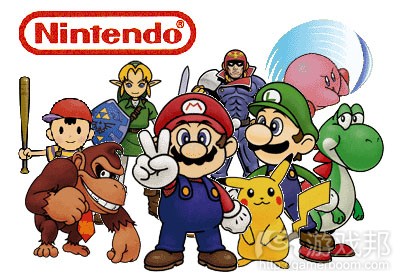当前电子游戏行业需要更加强大的平台
作者:Luc Bourcier
如今的电子游戏产业似乎退化回任天堂刚出现的前几年,即到处充斥着一些难以兼容且不断变化的游戏格式,并面向各种难以区分的用户提供大量的游戏。在这些游戏中,有些成为了经典,但更多的还是些质量糟糕的复制品。游戏的切入点都是一些高价的设备(游戏邦注:如Commodore,雅达利和Amstrad等),内容永远屈居第二。玩家可以在玲琅满目的游戏列表中进行搜索,尽管找到一款真正有趣的游戏更需要运气元素。这里所遵循的10大规则包括:当市场充斥了过多的游戏时,用户总是会选择一些风险性较低的产品,也就是最成功的产品(选择的人越多,游戏的销量也就越高)或最廉价的产品(如果免费模式可行的话便是免费产品)。还存在其它与当前市场相似的情境吗?
那时候的任天堂和世嘉为市场带来了些什么?他们创造了稳定且强大的技术以及一系列经过认证的游戏。并且随着技术的不断发展,他们将更多关注点放在了内容上,也就是在这时候,《马里奥》,《索尼克》等IP相继涌现出来。通向消费者市场的道路变得越发平坦,发行商所面对的生态系统也变得更有保障。显然,发行商必须对此做出适当调整,但是事实上,许多发行商都未能做到这一点。而那些懂得适应时代变化的发行商们则取得了进一步的发展与成功。但是在整个漫长的发展过程中,大多数发行商们似乎逐渐遗忘,或者说是从未经历电子游戏产业蓬勃的发展前期,并想当然地看待这一生态系统。显然这种情况不可能出现在数字挑战崛起的时候。
在价值链条中,免费总是最具破坏性的数字(网络和手机)元素。它有可能出现在音乐中,而在电子游戏中则会带来完全不同的积极作用,即免费游戏模式将能带给开发者更大的利益——尽管这种模式并不是由传统电子游戏公司所创造的。反之,网络所能够提供的最大利益之一则是降低准入门槛,从而为游戏扩大用户规模。
显然,如今的市场状况与80年代的市场的差别主要是因为全球的玩家数量已经达到了一个巨大的数值。所以游戏产业必须承认两个新的事实:1.基于不同玩家而决定不同的游戏时间(也就是对于一个月玩一个小时游戏的玩家以及一天玩一个小时游戏的玩家分别设定了不同的游戏);2.基于用户的使用情况(可下载内容,道具购买,订阅等)去决定游戏的最终价格。不过似乎除了这些,也没有其它差异性了。
当世界上还没有多少玩家的时候游戏发行商是如何为成功而拼搏的?当市场不能提供给利益相关者足够的利益时又是怎样的情况?关于这些问题可能会出现各种不一样的答案,但是如果想从不同的角度进行分析,首先需要回答一个问题:在市场处于低糜时期的80年代,任天堂和世嘉各带来了哪些成果?
–到达终端用户的最简单的方法便是避免以玩电子游戏作为切入点,而是努力呈献给他们更棒的用户体验。如今的游戏已经遍布各大平台,其服务质量更是多种多样。但是不管是何种服务总是存在着准入障碍,而终端用户所接收到的服务质量更是直接决定着这些障碍的高度。
–基于技术,业务模式,分销方式的稳定平台,这对于发行商,经销商和用户来说便是一种安全的中期/长期投资。发行商和终端用户总是需要回避风险;他们都需要确保金钱和时间的投入不会因为平台而付诸东流。
–专注于内容;设备只是接近有价值内容的工具。你必须针对内容或特定IP展开推广工作,而不是打着“无数游戏”的旗号。这些平台必须规划一个真正有效的发行策略,并包含一些独特的游戏。
–过滤;精心筛选游戏,留下高质量的内容并避免无意义的复制品的扩展。最后,平台还必须设置一些发现机制,让用户能够更加轻松地找到最适合自己的游戏。
这个产业不只需要处理业务模式问题,同时还需要考虑到分销问题。这个市场需要强大且稳定的平台,既能够提供给终端用户更高质量的服务,并拥有真正有效的发行策略。这并不是不可能实现的目标,就像IPTV和手机运营商正在努力将各种内容传输给用户,并成为最佳电子游戏分销平台;就像在VOD市场中(存在着许多难以亲近的平台)——尽管这里仍只有一些当地的玩家,并且也不存在国际供应商。Steam平台在市场中就取得了不错的成绩。这并不是源于这一平台有多强大,而是目前的市场上还没有多少像Steam这样的平台。
(本文为游戏邦/gamerboom.com编译,拒绝任何不保留版权的转载,如需转载请联系:游戏邦)
What the videogame industry needs now is less but stronger platforms
by Luc Bourcier
Somehow, the video game industry finds itself back to the pre-Nintendo years when there were many incompatible and ever changing formats offering a plethora of games to the same undiscriminated audience. Among these games, one could find those which became classics but, as a matter of fact, many were of poor quality, many were copycats and… many were pirated. The entry point was the –high priced- device (Commodore, Atari, Amstrad etc) and the content was coming second. Gamers would always find games to play among the vast list available even though discovery was hazardous. The top 10 rule applied i.e.: when a market is flooded with a plethoric offer, consumers tend to select the less risky choices which often means either the most successful products (The larger the choice, the bigger the sales of the top 10) or the cheapest ones (free if there is free available). Any similarity with a current market situation ?
What did Nintendo and Sega bring to the market at that time? They came with a simple packaged offer including a stable and robust technology and a selection of pre-approved games. Technology became more stable and the focus was set on content: Mario, Sonic and plenty of IPs emerged. Roads to market for consumers became simple and easy and the eco-system for publishers more secure. Obviously, publishers had to adjust and many just did not make it. However those who succeeded went through a period of growth and success. In the process however, many of them have forgotten -or simply never experienced- these hectic early days of the videogame industry and considered this eco-system granted. Which obviously did not happen as digital challenges arose.
Free is surely the most disruptive factor of digital (internet & mobile) in a value chain. It happened with music, it happens with videogames with a strong positive difference though which is the free-to-play model allowing for some monetization –even though it has not been invented by traditional videogame companies. In return, one of the strongest benefits of the internet is the lowering of entry barriers, the massification of audiences.
The market situation is obviously much different now from what it was in the eighties at least for one reason: the number of players across the globe is now truly massive. As a consequence, the industry has to acknowledge two new facts: a- gaming times are a segmentation parameter for the audience (there are games for consumers willing and able to play one hour per month and games for consumers playing one hour a day) and b- the final price for a game has become a variable dependent on the consumers’ usage (DLC, items, subscriptions etc make that each individual ends up paying a different price). However, for the rest, the current market situation is not that dissimilar.
How is it that many game publishers are struggling when there have never been as many players around the world? What is it the market lacks to provide wealth to its stakeholders? There may be a large variety of different answers to these questions but one way to look at them from a different angle consists in asking the question: What did Nintendo and Sega bring to a malfunctioning marketplace in the eighties?
-Simple roads to market for the end-user that is less entry points for playing videogames and a better customer journey. Today, games are available through an infinity of platforms delivering a wide range of quality of service .There is always an entry barrier to any service; the height of this barrier should be directly related to the quality of the service provided to the end-user.
-Stable platforms, in terms of technology, business models and distribution, that is a solution offering safer mid/long term investment for publishers, distributors and consumers. Publishers as well as end-users are risk adverse. Both need to make sure that the money –and time- invested will not end up in the sewer thanks to branded, recognizable, reliable platforms.
-Focus on content; devices are meant for accessing valuable content. Promotion must be made on content and on specific IPs , not on the “tons of games “pitch. These platforms must manage a true publishing strategy, comprising possibly exclusive games.
-Filtering; games are selected in order to allow for superior quality and avoid the proliferation of pointless copycats. Ultimately, platforms should include a solution for discovery allowing customers to find the games best suited for them.
This industry has to deal not only with a business model issue but also with a distribution issue. The marketplace needs to see the emergence of strong, stable platforms offering a quality service to end-users and able to manage a true publishing strategy. It may happen that IPTV and mobile carriers which are already streaming content to all of us become top platforms for videogames delivery, like in the VOD market (where there are much less platforms accessible to an individual customer) even though there are only local players and no international providers. The Steam platform has done good to the marketplace. The issue is not that they have become a power place, it is that there are not enough platforms like Steam.(source:gamasutra)








































 闽公网安备35020302001549号
闽公网安备35020302001549号